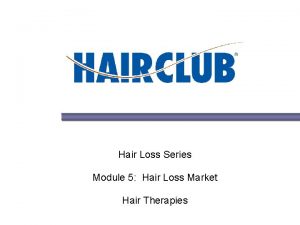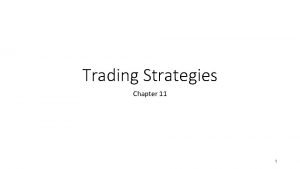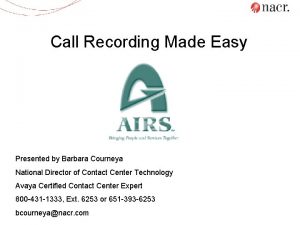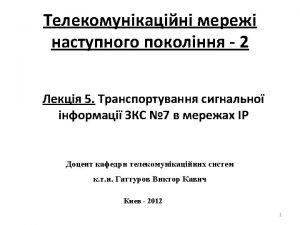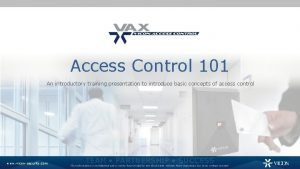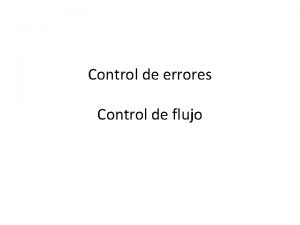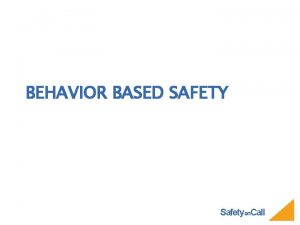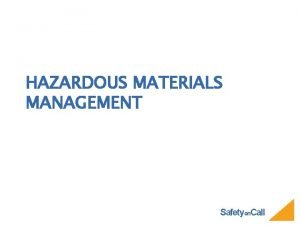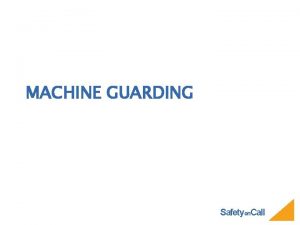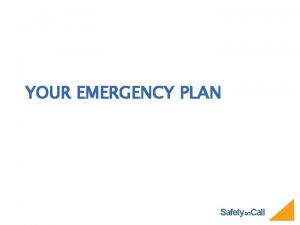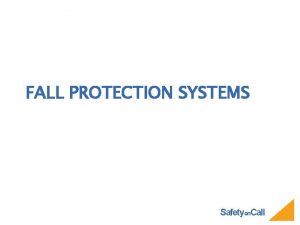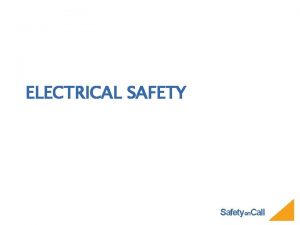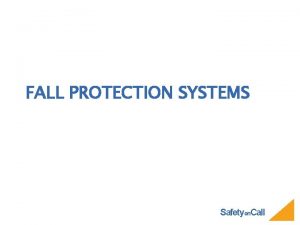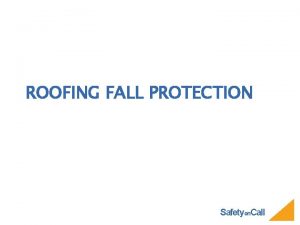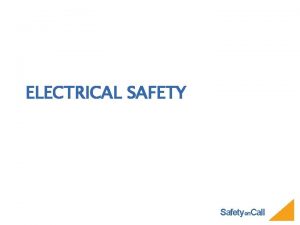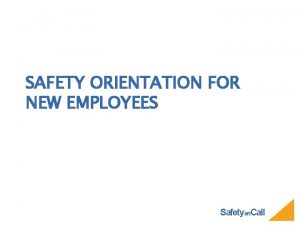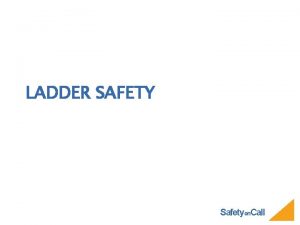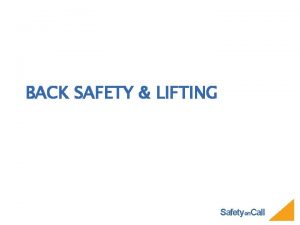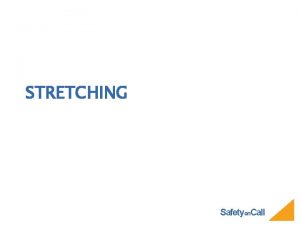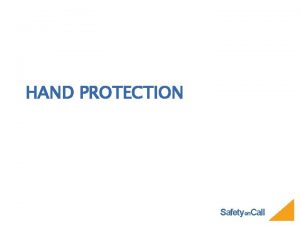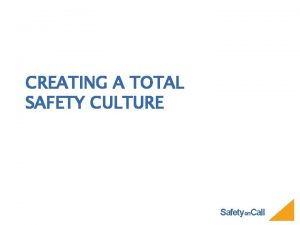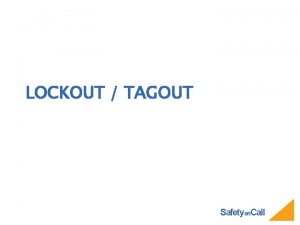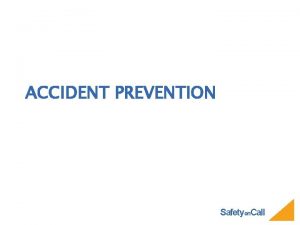LOSS CONTROL LEADERSHIP 101 Safetyon Call WHAT IS





















- Slides: 21

LOSS CONTROL LEADERSHIP 101 Safetyon. Call

WHAT IS LOSS CONTROL • Reducing & eliminating the occurrence of undesired events through engineering controls, enforcement of established procedures, frequent training and continuous evaluation. Safetyon. Call

UNDESIRED EVENTS • Not an accident, but a loss incident. • 3 causes: 1. Lack of Control 2. Basic Causes 3. Immediate Causes • Causing an undesired event. • Resulting in loss. Safetyon. Call

LACK OF CONTROL (MANAGEMENT DEFICIENCIES) • Inadequate Systems – Program in place hire, train and evaluate desirable. associates. • Inadequate Standards – Procedures in place to perform critical tasks. • Inadequate Compliance with Standards – Established standards are not enforced. Safetyon. Call

BASIC CAUSE • Underlining reason why the event occurred. • Basic Causes have 2 major categories: 1. Personal Factors – Inadequate Capability – lack of Knowledge – Lack of Skill 2. Environmental – Inadequate Leadership – Inadequate Equipment – Inadequate Engineering Safetyon. Call

IMMEDIATE CAUSES • The unsafe act or condition that caused the event to occur. • 2 Categories: 1. Substandard Acts (Behavior) – Improper Lifting – Failure to Lock Out equipment – Using Equipment improperly 2. Substandard Conditions – Inadequate Guards – Defective Tools – Inadequate Illumination Safetyon. Call

INCIDENTTHE CONTACT EVENT THAT CAUSES HARM OR DAMAGE. • Struck Against • Struck By • Fall • Caught In • Caught On • Caught Between • Contact With • Release of Energy Safetyon. Call

LOSS • Damaged Property • Damaged Equipment • Environmental Pollution • Injury • Death Safetyon. Call

COST OF LOSS INCIDENTS • $1 Injury Cost – Medical – Compensation Costs • Property Damage – Building Damage – Equipment Damage $1 to $3 – Repair Costs – Product Damage • $5 to $50 Miscellaneous Costs – Loss of Production – Additional Paperwork – Wages for lost time Safetyon. Call

NON MONETARY COSTS • Bad Press • Loss of Efficacy • Employee Moral • Organization of a Union • Ticked off people • OSHA Visit • Additional Frustration Safetyon. Call

PROACTIVE SAFETY • Responsibility • Authority • Accountability • Daily Safety Observations • Procedures • Discipline • Frequent Safety Talks • Employee Involvement Safetyon. Call

RESPONSIBILITY FOR SAFETY • Who has it at your Organization? • Do they have the Authority? • Safety is a line Responsibility. Safetyon. Call

TERMINOLOGY • A manager is assigned responsibility. • A manager is delegated authority to carry out the responsibility. • A manager is held accountable for carrying out or not carrying out the responsibility. Safetyon. Call

SAFETY MANAGEMENT • Responsibility – Design of Program – Provide Technical Assistance – Measure Activity & Results for Accountability • Authority – Advise, Warn & Question • Accountability – Quality of program – Accuracy of Technical Advise Safetyon. Call

ELIMINATE UNSAFE ACTS, ELIMINATE LOSS 1 Serious Injury 29 Minor Injuries 300 Non-Injury Incidents 700, 000 Unsafe Behaviors Safetyon. Call

DAILY SAFETY OBSERVATIONS • Observe most critical tasks most often. • Immediate corrective action for substandard behavior: – Stop task at hand – Start positive – Coach on substandard behavior – End on positive stern note • Show sincere praise for safe behavior. Safetyon. Call

DISCIPLINE • Last resort for minor issues. • First resort for major issues. • Must be: – Direct – Consistent – Immediate – Always coach on substandard behavior. Safetyon. Call

SAFETY TALKS • As frequent as possible. • Supervisor should lead the talk. • Less then 10 minutes. • Subjects & Topics should vary. • Comply with OSHA and State. • Raise the awareness level. Safetyon. Call

REACTIVE SAFETY & RECOVERY • Investigate - Analyze • Analyze all incidents. • Discover root causes. • Implement corrective action ASAP. • Communicate incident to all associates. • If it happened somewhere else, ask could it happen here? • Claims management. Safetyon. Call

EMPLOYEE INVOLVEMENT • Make them feel part of the program. • Train them in CPR & 1 st Aid. • Have them conduct training. • Conduct observation on each other. • Listen and act on their concerns. • Write JSA’s. Safetyon. Call

CONCLUSION • Better Understanding of: – What a loss incident is. – The real cost of a loss incident. – Causes of a loss incident. – Proactive safety. – Reactive safety and recovery. Safetyon. Call
 Normal loss treatment in process costing
Normal loss treatment in process costing Hair loss 101
Hair loss 101 Protective put
Protective put Stock options terminology
Stock options terminology +call +recording +call +centers +gartner
+call +recording +call +centers +gartner Ihi leadership alliance
Ihi leadership alliance Leadership 101 presentation
Leadership 101 presentation Leadership 101
Leadership 101 Transactional vs transformational
Transactional vs transformational Adaptive management style
Adaptive management style Capable but cautious performer
Capable but cautious performer Bearer independent call control
Bearer independent call control Access control 101
Access control 101 Primary control vs secondary control
Primary control vs secondary control Dairy plant management
Dairy plant management Fluid mechanics
Fluid mechanics Stock control e flow control
Stock control e flow control Control volume vs control surface
Control volume vs control surface Negative control
Negative control Positive control vs negative control
Positive control vs negative control Hdlc adalah
Hdlc adalah Control de flujo parada y espera
Control de flujo parada y espera

